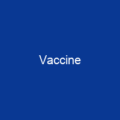Vaccination: A Lifesaver in the Fight Against Diseases
Imagine a world where diseases like smallpox, polio, and tetanus no longer pose a threat. Vaccination is the key that unlocks this door to a healthier future.
The Basics of Vaccination
Vaccination is the administration of a vaccine to help the immune system develop immunity from a disease, containing microorganisms or proteins in a weakened state. It prevents sickness from infectious diseases, promoting herd immunity and widespread vaccination efforts leading to global eradication of smallpox and diseases like polio and tetanus. According to WHO, vaccination prevents 3.5-5 million deaths per year.
History and Development
The concept was first applied in China during the 16th century for smallpox prevention and developed further by Louis Pasteur. Vaccination efforts have faced reluctance due to various reasons but have led to widespread acceptance and significant reduction in disease incidence through mass vaccination campaigns.
Vaccines: A Closer Look
Vaccines can be administered via injection or orally to produce immunity in the bowel. Vaccination provides lasting immunity, usually taking several weeks to develop. Some vaccines are given before exposure to a disease, but some are administered after contraction, offering protection or reducing severity of symptoms. Examples include rabies, AIDS, cancer, and Alzheimer’s vaccines.
How Vaccines Work
Vaccines undergo rigorous clinical trials to ensure safety and efficacy before approval by authorities. Minor side effects are common, but serious side effects are rare and typically involve allergic reactions. During vaccine testing, researchers study vaccines in animals and then conduct human trials in three phases:
- Phase I: Assessing safety in a small group of people.
- Phase II: Evaluating safety and effectiveness in a larger group.
- Phase III: Testing efficacy in hundreds to thousands of volunteers.
If a vaccine passes all phases, it can be licensed by regulatory authorities like the FDA. Vaccines also undergo phase IV trials, monitoring safety and efficacy in tens of thousands of people over years.
Vaccine Ingredients and Safety Concerns
Vaccine ingredients can vary greatly, and no two vaccines are the same. Aluminium is an adjuvant ingredient used in some vaccines to create a stronger immune response. Mercury was once found in thiomersal or thimerosal but has been largely phased out due to toxicity concerns.
Common Myths Debunked
The terms ‘vaccination’ and ‘inoculation’ are not synonymous. Inoculation involves treatment with unattenuated variola virus, often resulting in infection. Some vaccines prevent infection (sterilizing immunity), while others lower the chance of severe disease without reducing the probability of becoming infected.
The Global Impact of Vaccination
Vaccination has been shown to prevent millions of deaths worldwide, with an estimated 3.5-5 million deaths prevented annually. However, vaccination rates are lower in developing countries due to limited resources and availability of vaccines. In the US, vaccine adoption is reduced among certain populations, such as those with low incomes and limited access to healthcare.
A Brief History
The history of vaccination dates back to the use of cowpox to inoculate people against smallpox in China and Europe. Edward Jenner tested cowpox immunity in 1796 and developed an ‘arm-to-arm’ vaccine propagation method, leading to widespread interest and establishment in British India, Ceylon, and other parts of the world.
Challenges and Controversies
Vaccine failure occurs when an organism contracts a disease despite being vaccinated, due to individual variations in immune response rather than vaccine defect. The notion of a vaccine-autism link originated in a 1998 study that was widely criticized for lack of scientific rigor and falsified data. Validated studies have consistently shown no correlation between vaccines and autism.
Modern Challenges
The development cost of a vaccine for each disease is estimated to be $2.8 billion to $3.7 billion, compared to the potential cost of an outbreak. Game theory can model costs and benefits of vaccines and has been used to analyze vaccination uptake in diseases like influenza and measles.
Conclusion
Vaccination remains a powerful tool in our fight against infectious diseases. Despite challenges and controversies, its benefits far outweigh the risks. By staying informed and supporting vaccination efforts, we can continue to protect ourselves and future generations from preventable illnesses. Vaccines are not just about preventing disease; they are about building a healthier world for everyone.

You want to know more about Vaccination?
This page is based on the article Vaccination published in Wikipedia (retrieved on March 11, 2025) and was automatically summarized using artificial intelligence.





